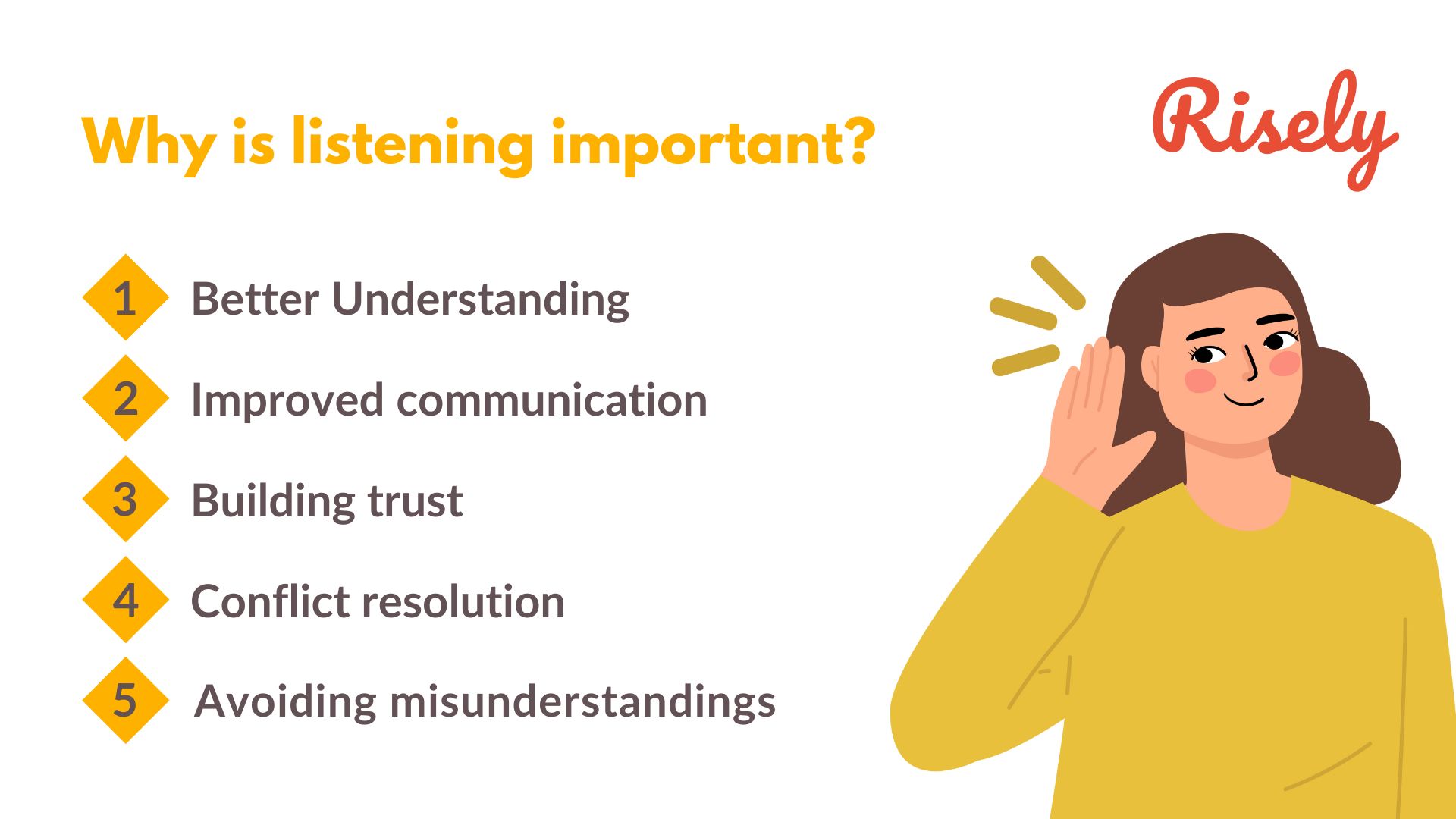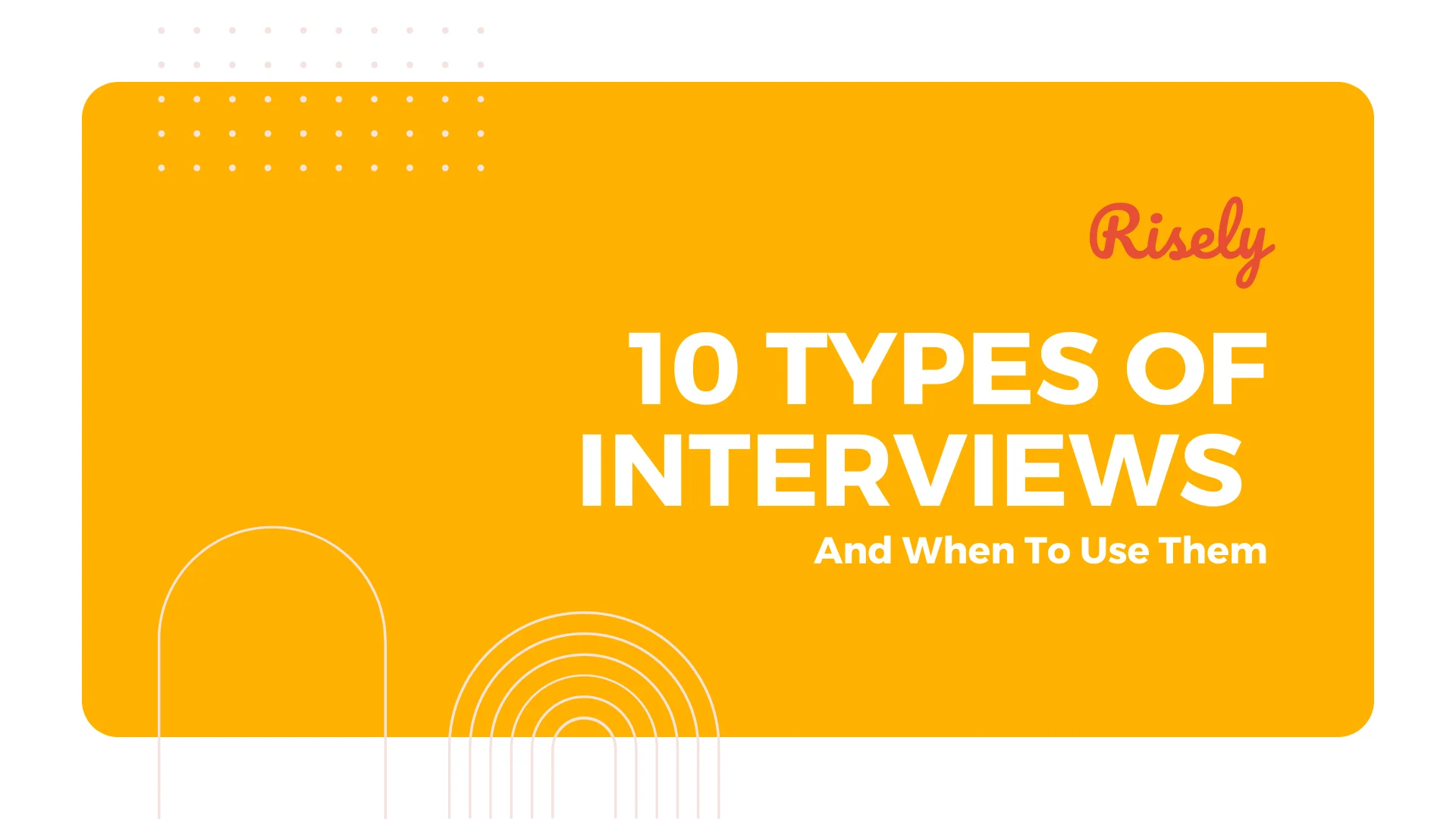20 Active Listening Questions to Help You Become a Better Listener
Effective communication is critical to building strong relationships and achieving success in both personal and professional settings. One of the essential aspects of effective communication is active listening, which involves paying attention to and fully understanding what the other person is saying. In this blog, we’ll explore active listening questions to help you become an active listener. By asking these active listening questions, you can show the other person that you are engaged, interested, and genuinely care about their words. Whether conversing with a friend, a colleague, or a client, these active listening questions will help you build stronger relationships at the workplace, resolve conflicts, and achieve your goals. So, let’s dive in and learn how to become a better listener!What is active listening?
Active listening is a communication technique that involves fully engaging with the speaker and paying attention to what they are saying verbally and non-verbally. It focuses on the speaker’s words, tone of voice, body language, and overall message to understand their perspective better. Active listening requires being present at the moment and avoiding distractions or interruptions that may prevent full engagement with the speaker. It also involves demonstrating interest and empathy through verbal and non-verbal cues, such as nodding, maintaining eye contact, and asking clarifying questions. Active listening can be used in various settings, including personal and professional relationships, to improve communication and build trust. It can also help resolve conflicts, clarify misunderstandings, and foster meaningful connections with others.Why is listening important?
Listening is a critical component of effective communication and interpersonal relationships. It allows us to connect with others more profoundly and build meaningful connections. Listening is essential for several reasons:- Better understanding: Listening allows you to understand better the person or situation you are interacting with. It enables you to gather information, clarify your understanding, and gain insights you might not have otherwise.
- Improved communication: When you listen actively, you can communicate more effectively with others. You can respond to their needs, concerns, and emotions in a more meaningful way.
- Building trust: Listening attentively helps to build trust and rapport with others. It shows that you value their input and are genuinely interested in what they say.

- Avoiding misunderstandings: Misunderstandings can arise when people fail to listen to each other. Active listening helps to prevent such misunderstandings by ensuring that all parties are on the same page.
- Conflict resolution: Listening is an essential tool for resolving conflicts. It enables you to understand the other person’s point of view, identify the root causes of the conflict, and work towards a mutually beneficial solution.
Listening vs. hearing
Listening and hearing are two related but distinct concepts. Hearing refers to the physical ability to detect sounds through the ear while listening refers to the active process of paying attention to and interpreting those sounds. Hearing is a passive process that occurs without conscious effort. We are constantly exposed to various sounds in our environment, but we may not necessarily be actively listening to them. For example, you may hear a car passing outside but pay little attention. On the other hand, listening is an active process involving paying attention to and interpreting our sounds. It requires conscious effort and concentration to understand the meaning behind the sounds. For example, if you are conversing with someone, you must actively listen to what they say to understand their message. While hearing is a natural ability, listening is a learned skill that requires practice and effort to master. Active listening involves hearing the words being spoken and paying attention to the speaker’s tone of voice, body language, and other nonverbal cues. It also involves asking questions, seeking clarification, and engaging in a dialogue to ensure you fully understand the speaker’s message. Check out Active vs Passive listening: What’s the difference and why does it matter?Other Interesting Reads
5 Active Listening Techniques
Active listening is a crucial skill for effective communication and building solid relationships. Here are five techniques to enhance your active listening abilities:- Maintain eye contact: Engage with the speaker by making consistent but not overly intense eye contact. This shows your attentiveness and interest in what they’re saying.
- Paraphrase and reflect: After the speaker finishes a point, paraphrase it or reflect it back to them. This demonstrates your understanding and encourages the speaker to clarify or elaborate on their thoughts.
- Ask open-ended questions: Encourage the speaker to share more by asking open-ended questions that cannot be answered with a simple “yes” or “no.” This promotes deeper conversation and allows the speaker to express their thoughts and feelings.
- Empathize and validate: Show empathy by acknowledging the speaker’s emotions and validating their feelings. This can be as simple as saying, “I can understand why you’d feel that way.” It helps create a supportive and understanding atmosphere.
- Avoid interrupting: Resist the urge to interrupt or immediately respond. Let the speaker finish their thoughts and pause briefly before providing your input. This shows respect for their perspective.
Active listening Questions to Ask Others
Active listening is a skill that requires effort and practice. It helps improve professional relations among teams. One of the best ways to develop active listening skills is to ask open-ended questions. When you ask questions, you show interest and engagement in the conversation. In addition, you encourage the speaker to share more information and feelings by asking active listening questions. Here are ten active listening questions that can help you become an active listener when talking to others:- Can you tell me more about what you just said? Example: “Can you expand on your point about why you think this idea won’t work?”
- How do you feel about this situation? Example: “How are you feeling about what’s going on right now?”
- Can you clarify what you mean by that? Example: “I’m not sure I understand what you mean by ‘efficiency’ in this context. Could you clarify that for me?”
- Can you give me an example? Example: “Could you give me an example of how this process works in practice?”
- What is the best way to approach this issue? Example: “What do you think would be the best way to resolve this conflict?”
- How important is this issue to you? Example: “How important is it to you that we get this project completed on time?”
- Can you tell me more about your experience with this? Example: “Can you tell me more about your experience with this particular software?”
- How can I help you with this? Example: “What can I do to assist you with this project?”
- What concerns do you have about this? Example: “What concerns do you have about this new initiative we’re starting?”
- Is there anything else you would like to add? Example: “Is there anything else you’d like to share before we move on to the next topic?”
Active listening Questions to ask oneself
Active listening is a crucial skill that entails fully concentrating on the speaker, understanding their message, and responding appropriately. Here are some active listening questions to consider asking oneself to ensure you are actively listening to someone.- What is the main message that the speaker is trying to convey? Example: “What is the key point that the speaker is making?”
- What emotions is the speaker expressing? Example: “How does the speaker feel about the topic they are discussing?”
- What nonverbal cues is the speaker giving? Example: “What is the speaker’s body language telling me?”
- What assumptions am I making about what the speaker is saying? Example: “Am I interpreting the speaker’s words correctly, or am I making assumptions?”
- What questions do I have about what the speaker is saying? Example: “What else would I like to know about the topic the speaker is discussing?”
- What connections can I make between the speaker’s words and my own experiences or knowledge? Example: “How does what the speaker is saying relate to my own experiences?”
- What feedback can I give the speaker to show I am actively listening? Example: “How can I show the speaker that I am engaged and interested in what they are saying?”
- What is the speaker’s perspective on the topic they are discussing? Example: “What are the speaker’s views on the issue they are talking about?”
- What is the context surrounding the speaker’s message? Example: “What other factors may be influencing the speaker’s perspective?”
- What actions can I take to respond to the speaker’s message effectively? Example: “What steps can I take to address the speaker’s concerns or provide assistance?”
Conclusion
Active listening is vital in today’s world, where communication and relationships have become more complex. When you take the time to listen and understand someone, the rewards of more profound, meaningful connections can be immense. Active listening questions can turn a conversation into a productive exchange of ideas, feelings, and information. They get people to open up, feel heard, and create mutual trust and respect. So, whether speaking to others or asking thoughtful questions, use active listening techniques. Remember, you are there to understand, not just to hear.Test your active listening skills for free now!
Take the free active listening assessment for managers to understand where you are making errors.
Active Listening Questions FAQs
What are some signs of active listening?
Active listening can be shown through nodding, eye contact, and maintaining an open posture. Repeating what the speaker said or summarizing their points demonstrates engagement in the conversation. Asking clarifying questions, like “Can you explain that further?” shows interest and a desire to understand. Avoiding distractions, such as checking your phone, is crucial for active listening. These signs help demonstrate that you are present and engaged in the conversation and value the speaker’s words.
What are the three components of active listening?
Active listening involves three components: paying attention, withholding judgment, and reflecting on what has been said. Paying attention means focusing on the speaker and avoiding distractions. Withholding judgment means avoiding assumptions or jumping to conclusions about the speaker’s words. Lastly, reflecting on what has been said involves summarizing and repeating the speaker’s words to show understanding. All three components are essential for effective communication and building strong personal and professional relationships.
Is asking questions good listening?
Yes, asking questions is an integral part of active listening. You can clarify information, show interest, and demonstrate understanding by asking questions. Open-ended questions can be particularly effective at fostering dialogue and eliciting more detailed responses.
It’s essential to balance and avoid interrupting or dominating the conversation. You can build rapport with the speaker and gain valuable insights by actively listening and asking thoughtful questions.
It’s essential to balance and avoid interrupting or dominating the conversation. You can build rapport with the speaker and gain valuable insights by actively listening and asking thoughtful questions.
Other Related Blogs
10 Types of Interviews Every Hiring Manager Should Know
10 Types of Interviews Every Hiring Manager Should Know Interviews are a crucial part of the job search process, as they provide an opportunity for hiring managers to assess potential…
Performance Management Training: Empowering Managers To Manage Better
Performance Management Training: Empowering Managers To Manage Better Remember that feeling of dread when you knew performance review season was rolling around? Yeah, us, too. For many employees, performance reviews…
Leaders Who Don’t Listen Often Fail. Here’s 5 Reasons Why
Leaders Who Don’t Listen Often Fail. Here’s 5 Reasons Why Leadership is a complex and dynamic role that requires a diverse set of skills and qualities. While many attributes contribute…
Grooming for Management: The Key to Building a Sustainable Leadership Pipeline
Grooming for Management: The Key to Building a Sustainable Leadership Pipeline Imagine a crucial leadership position opening up in your organization. You scramble to fill the role, internally and externally,…


